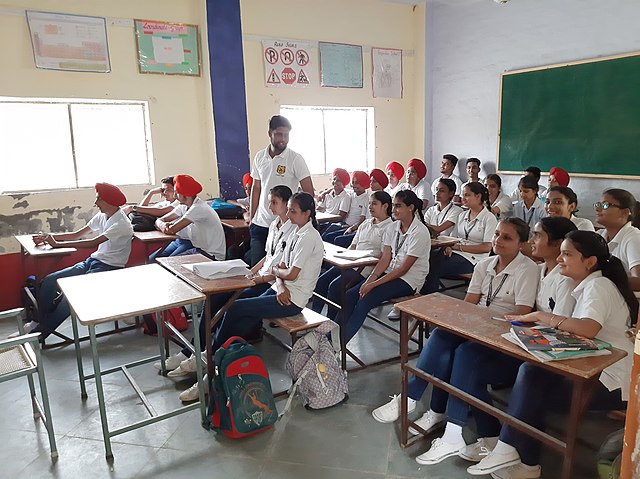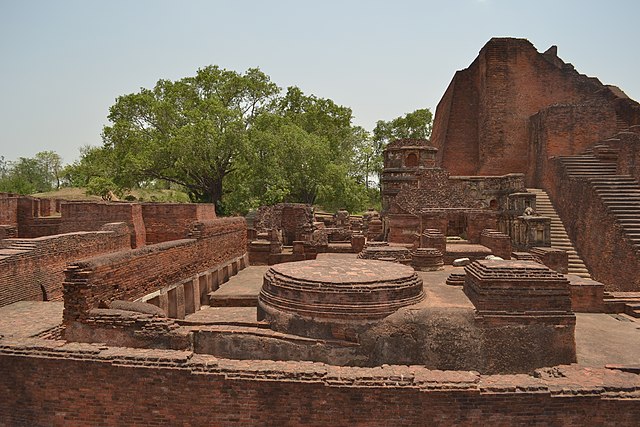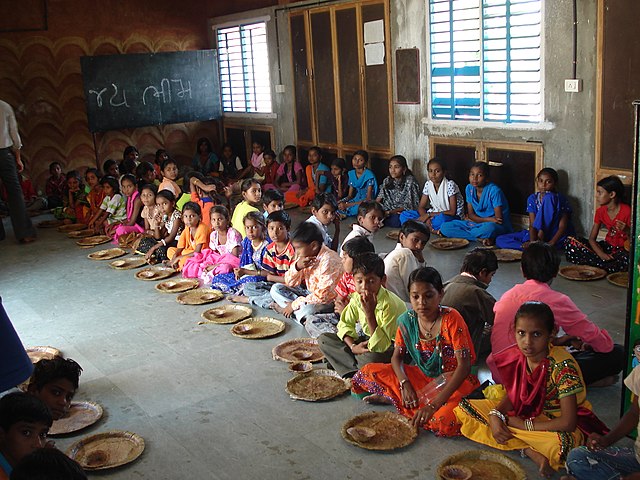Education in India is primarily managed by the state-run public education system, which falls under the command of the government at three levels: central, state and local. Under various articles of the Indian Constitution and the Right of Children to Free and Compulsory Education Act, 2009, free and compulsory education is provided as a fundamental right to children aged 6 to 14. The approximate ratio of the total number of public schools to private schools in India is 10:3.
Education in India
A statue of Sushruta (800 BCE), author of Sushruta Samhita and the founding father of surgery, at Royal Australasian College of Surgeons (RACS) in Melbourne, Australia.
The remnants of the library of Nalanda, built in the 5th century CE by Gupta kings. It was rebuilt twice after invasion, first after an invasion from the Huns in the 5th century CE and then after an invasion from the Gaudas in the 7th century CE but abandoned after the third invasion by Turkic invaders in the 12th century.
A child learning alphabets, showing the first letters of the Brahmi alphabet, 2nd century BCE.
India is the most populated country in the world with nearly a fifth of the world's population. According to the 2022 revision of the World Population Prospects the population stood at 1,407,563,842.
School lunch at Raika Primary School in Gujarat
Indian Pre-Primary School children (Divine Orchids International Preschool, Jawhar)
Anganwadi centre at Velhe, Pune district, 2019
School children reading books in government primary school library, in Goa








